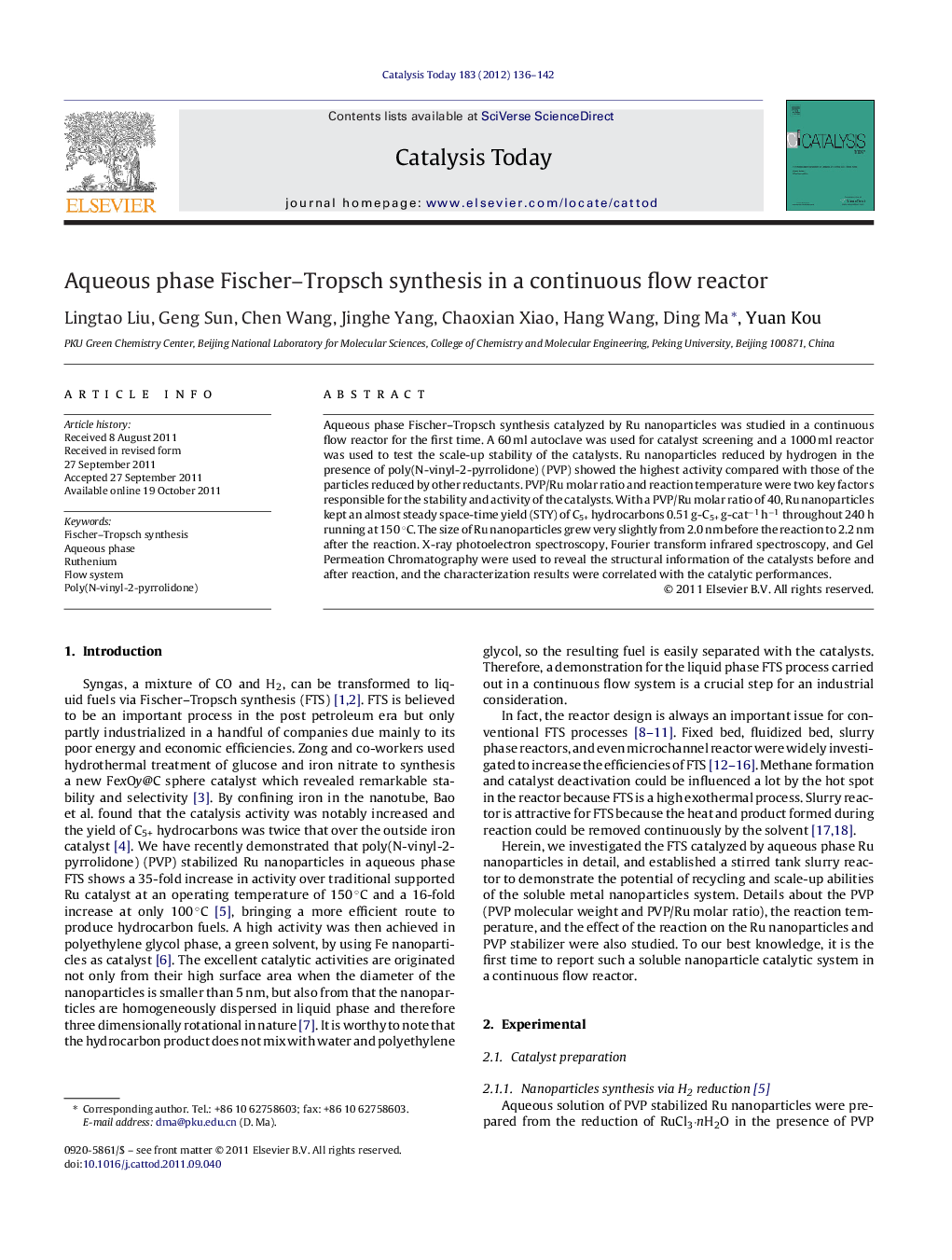| کد مقاله | کد نشریه | سال انتشار | مقاله انگلیسی | نسخه تمام متن |
|---|---|---|---|---|
| 55425 | 47052 | 2012 | 7 صفحه PDF | دانلود رایگان |

Aqueous phase Fischer–Tropsch synthesis catalyzed by Ru nanoparticles was studied in a continuous flow reactor for the first time. A 60 ml autoclave was used for catalyst screening and a 1000 ml reactor was used to test the scale-up stability of the catalysts. Ru nanoparticles reduced by hydrogen in the presence of poly(N-vinyl-2-pyrrolidone) (PVP) showed the highest activity compared with those of the particles reduced by other reductants. PVP/Ru molar ratio and reaction temperature were two key factors responsible for the stability and activity of the catalysts. With a PVP/Ru molar ratio of 40, Ru nanoparticles kept an almost steady space-time yield (STY) of C5+ hydrocarbons 0.51 g-C5+ g-cat−1 h−1 throughout 240 h running at 150 °C. The size of Ru nanoparticles grew very slightly from 2.0 nm before the reaction to 2.2 nm after the reaction. X-ray photoelectron spectroscopy, Fourier transform infrared spectroscopy, and Gel Permeation Chromatography were used to reveal the structural information of the catalysts before and after reaction, and the characterization results were correlated with the catalytic performances.
Aqueous phase Ru nanoparticles catalyzed Fischer–Tropsch synthesis in a continuous flow reactor at moderate temperatures were realized for the first time, resulting in a steady catalytic performance for 240 h with no obvious change of the nanoparticle size.Figure optionsDownload high-quality image (213 K)Download as PowerPoint slideHighlights
► Aqueous phase Fischer–Tropsch reaction is first realized in a continuous flow reactor.
► The performance of Ru nanoparticle catalyst keeps steady during the 240 h reaction.
► The diameter of the Ru nanoparticle keeps unchanged under optimal conditions while the molecular weight of the stabilizer degrades.
Journal: Catalysis Today - Volume 183, Issue 1, 20 March 2012, Pages 136–142